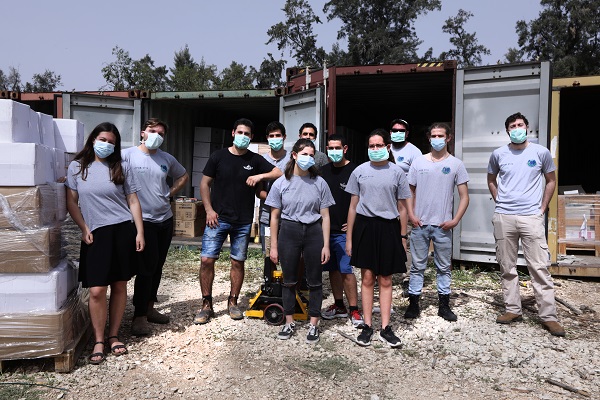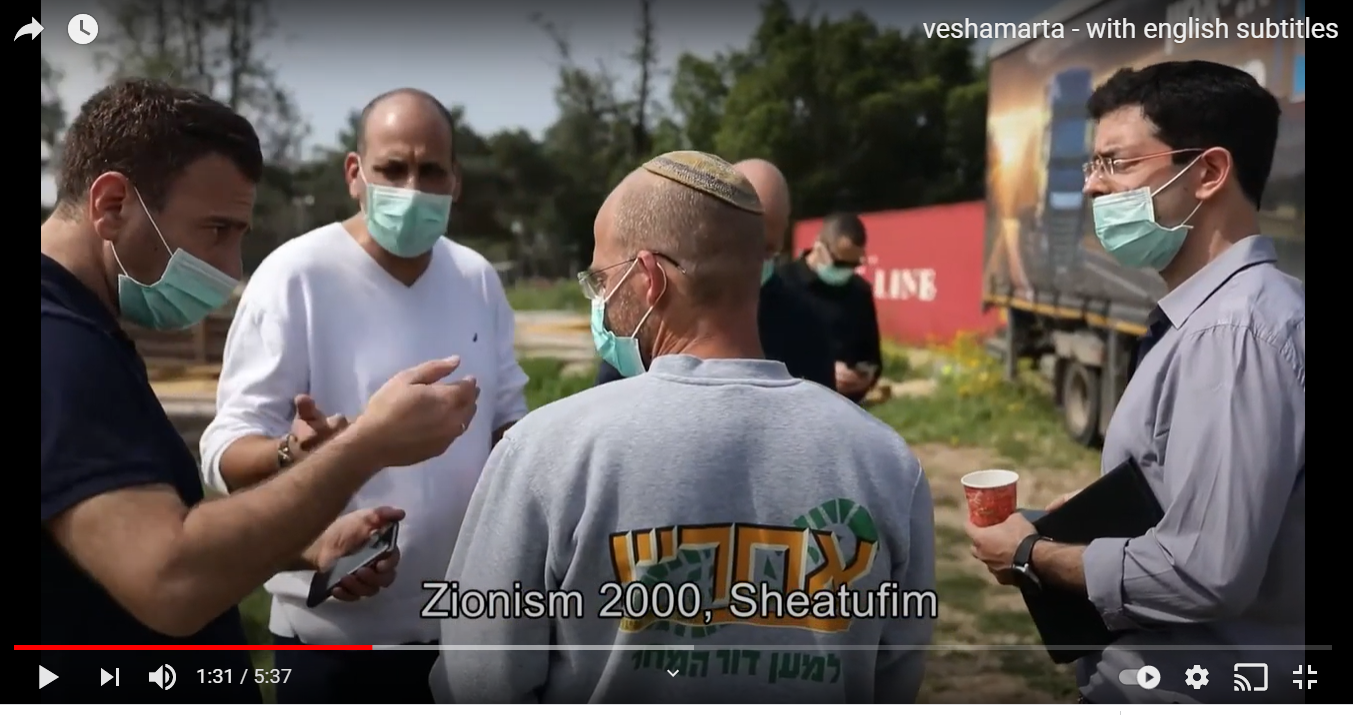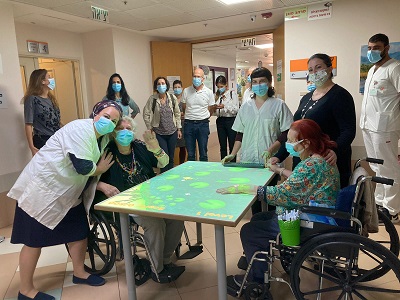The Ve'shamarta Initiative
A large-scale emergancy operation to reduce infection of the Corona virus among the residents of geriatric institutions

The Ve'shamarta Initiative
A large-scale emergancy operation to reduce infection of the Corona virus among the residents of geriatric institutions

The 'Veshamarta' initiative was launched with the outbreak of the Corona epidemic in Israel on March 2020, and operated for 9 months in geriatric institutions throughout the country. During this period, the project succeeded in bringing the issue of the treatment in geriatric institutions and nursing homes to the public attention, and positively influenced the national response. Veshamarta contributed to the prevention of mass infection and saved lives.
operated for 9 months in geriatric institutions throughout the country. During this period, the project succeeded in bringing the issue of the treatment in geriatric institutions and nursing homes to the public attention, and positively influenced the national response. Veshamarta contributed to the prevention of mass infection and saved lives.
The project adapted the Collective Impact model to an emergency operation, by recruiting and collaborating with a cross-sector partner network that responded to the urgent national challenge and within a short period of time managed to produce a significant impact despite the uncertain and unstable conditions.

Preventing Corona virus infection among 25,000 residents in 312 nursing homes and geriatric institutions
Early in the first days of the epidemic outbreak, it became clear that the residents of geriatric institutions have particularly high rates of morbidity and mortality due to their advanced age and vulnerable health. The closures and isolation measures enforced by the authorities in order to deal with the spread of the virus threatened to increase the residents' sense of loneliness and depression. In addition, there was a fear that the outbreak of the epidemic in institutions would create congestion in the emergency rooms and cause the collapse of the entire health system.
Sheatufim and Zionism 2000 joined together to form 'Veshamarta' and to address this national challenge. We developed and implemented a variety of measures to prevent Corona virus infection among 25,000 residents in 312 nursing homes and geriatric institutions throughout Israel.

The first part of the project lasted three months and included rapid organization, setting up collaborations, mobilization of resources, identification of gaps and challenges and formulating courses of action. Based on the needs identified, four main areas of action were defined:
The second part of the project lasted 6 months and focused on creating an infrastructure to improve the geriatric institutions in Israel and to strengthen their professional management backbone.
The activity included three main efforts:
 professional brief was prepared to formulate an emergency action plan for the institution and a training kit was distributed to all the institutions. 171 institutions underwent training that included operational, organizational, mental and training aspects designed to implement the transition from routine to emergency action in the institutions.
professional brief was prepared to formulate an emergency action plan for the institution and a training kit was distributed to all the institutions. 171 institutions underwent training that included operational, organizational, mental and training aspects designed to implement the transition from routine to emergency action in the institutions.During the 9 months of operation of the project, until all the residents of the institutions were vaccinated against the virus, the 'Veshamarta' project managed to bring the geriatric institutions to a much better level of readiness and coping ability than on the eve of the outbreak and contributed to the prevention of the collapse of the health system in Israel. Providing protective equipment to institutions quickly and continuously, improving knowledge and skills in preventive behavior, reducing manpower gaps and investing in the resilience of managers, staff and tenants, preserving the functioning of the array of systems and providing maximum protection for tenants from the virus as well as improving their quality of life.
The strategic and immediate cooperation with the Ministries of Health and Welfare helped to advance the decision to formulate a national plan, to establish the “Fathers and Mothers Sheild” and to influence its courses of action.
Cooperation with the Immigration Authority led to the opening of bureaucratic barriers in the employment of foreign workers in the institutions, and cooperation with the umbrella organizations of the institutions sharpened and strengthened their role in the field of action and in the processes initiated and implemented by the enterprise.
The Veshamarta project contributed to improving the functioning of the geriatric system in Israel in emergencies and worked to create an infrastructure to strengthen its routine operations as well. Among other things, by laying the foundations for a re-examination of the entire out-of-home system in preparation for building a regulatory-organizational-financial infrastructure, for strengthening and improving the resilience of institutions for long-term care and the adoption of innovations in the field.
